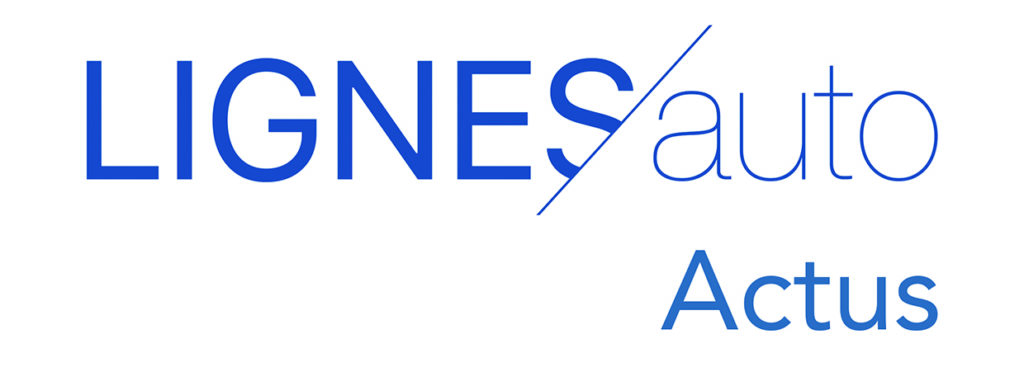

DISCOVER THE SCENIC VISION CONCEPT WITH THE VIDEO LIGNES/auto :
WELCOME TO 2024
The Scénic Vision concept car carries three messages:
1-it unveils the style of the next generation of Scénic scheduled for 2024, 100% electric and based on the platform of the recent Mégane E-TECH saloon
2-the new and forward-looking interior (2028) of what could be the post-Open R
3-the electric powertrain with a range extender in the form of a hydrogen fuel cell (post-2030) that allows a range of 800 kg with a single stop of a few minutes to fill the hydrogen tank.
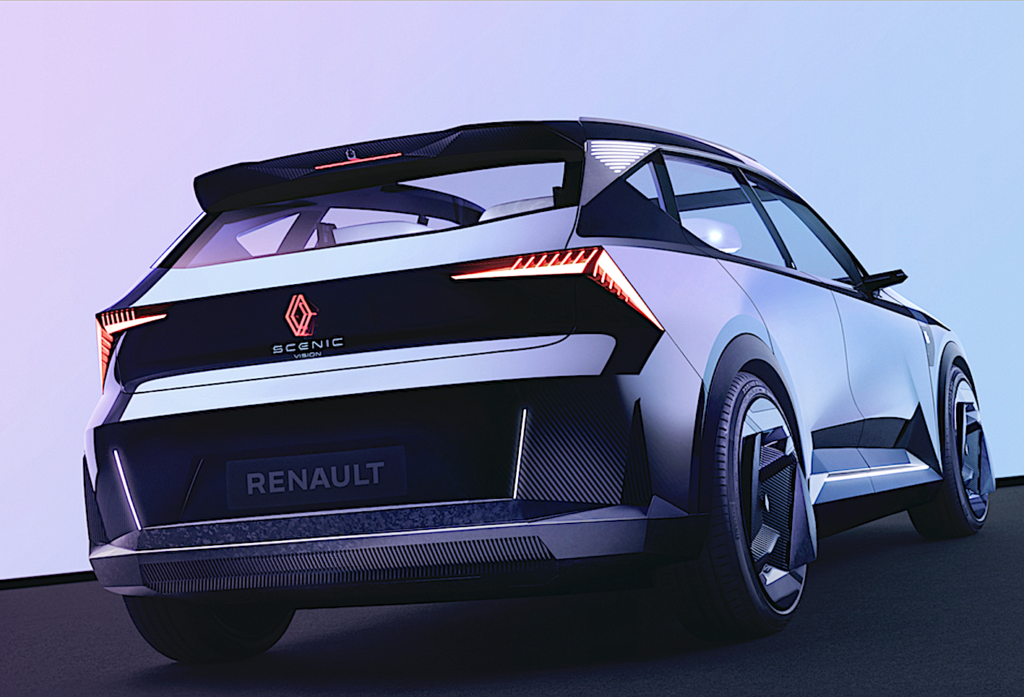
Below, the morphology of the Scenic 2024, which is 90% visible on this concept, no longer uses a unibody or One Box design, but a classic architecture with a flat bonnet (on the concept, it hides the hydrogen tank), a windscreen pillar that is set back quite a bit and a hatchback volume with a sloping tailgate.
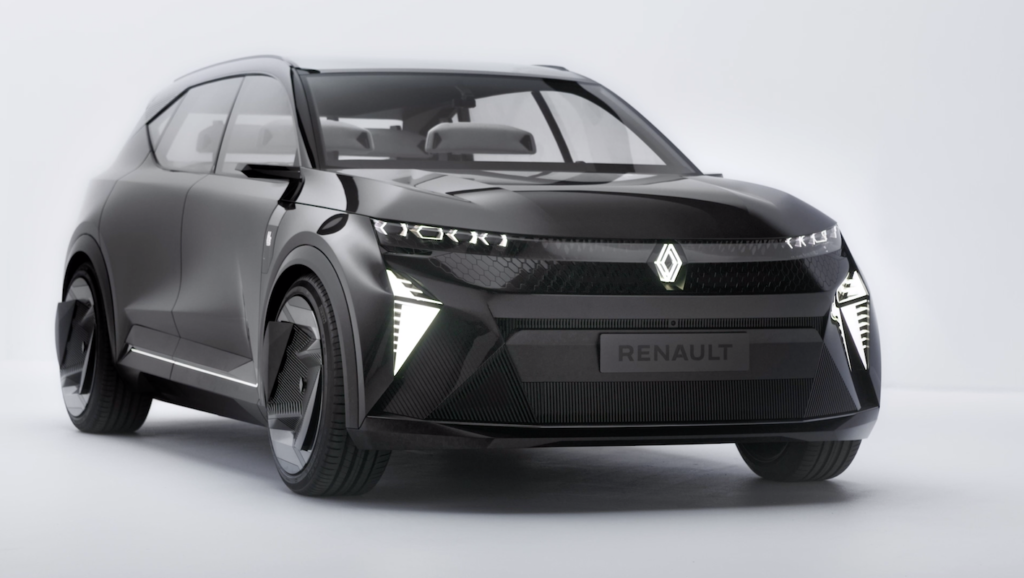
The front end has a very angular style, with daytime running lights that interpret the Renault logo in a half-angel shape. The front grille is solid, as this is an all-electric car, but it is embellished with motifs that slide under the transparent band.
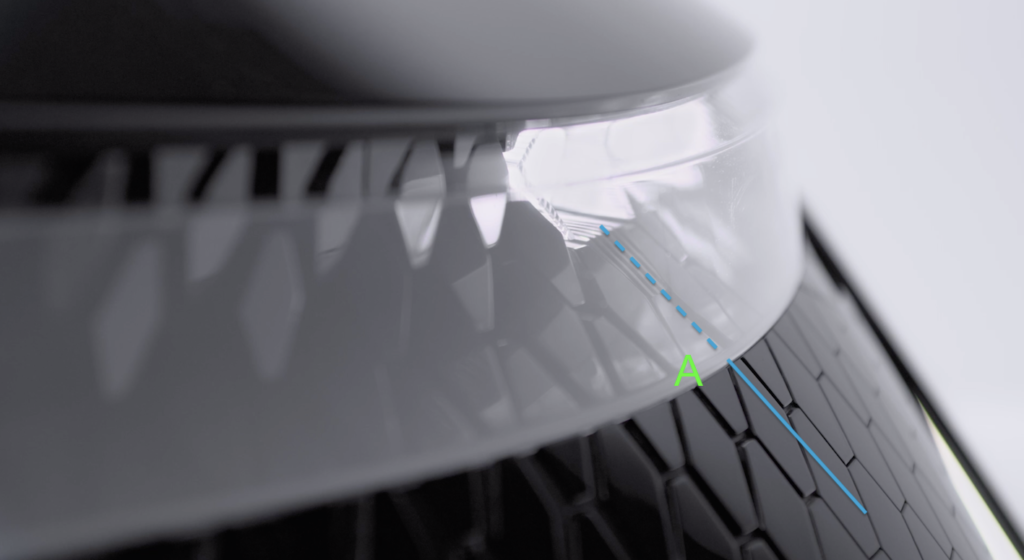
Above, the transparent band that runs across the entire width of the Scénic (A) extends over the grille. The logo graphics are thus partly covered by the headlights.
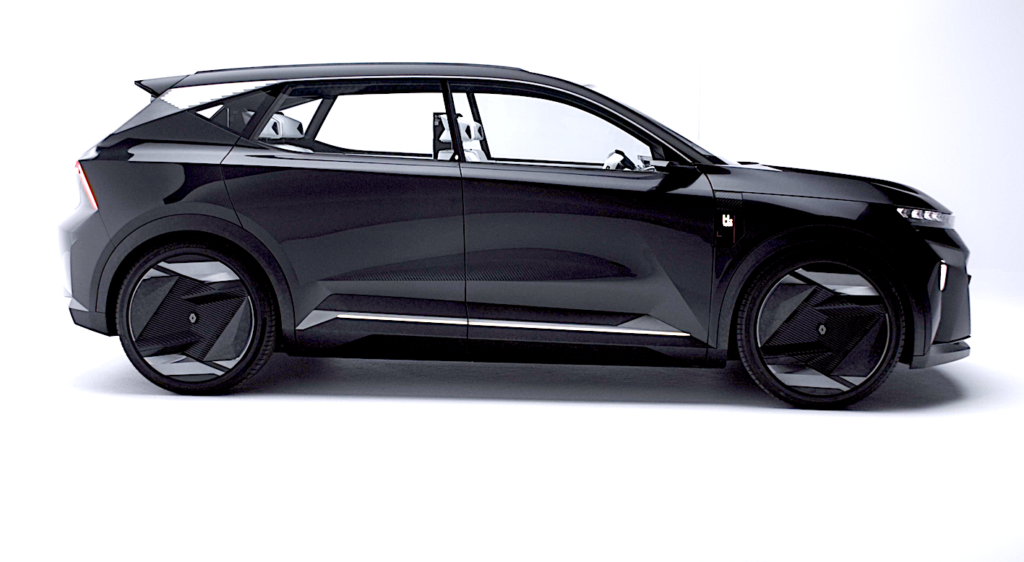
The next Scénic will not be a unibody: its bonnet is very flat, muscular and the windscreen bay is set back like on a Mégane or even a Peugeot 308! But the generous wheelbase of the 2024 Scénic (2.83 m, 5 cm more than that of the large Citroën C5X) will allow for good interior space. As Gilles Vidal says, “Scénic is not a silhouette, it’s a reason for being…”.
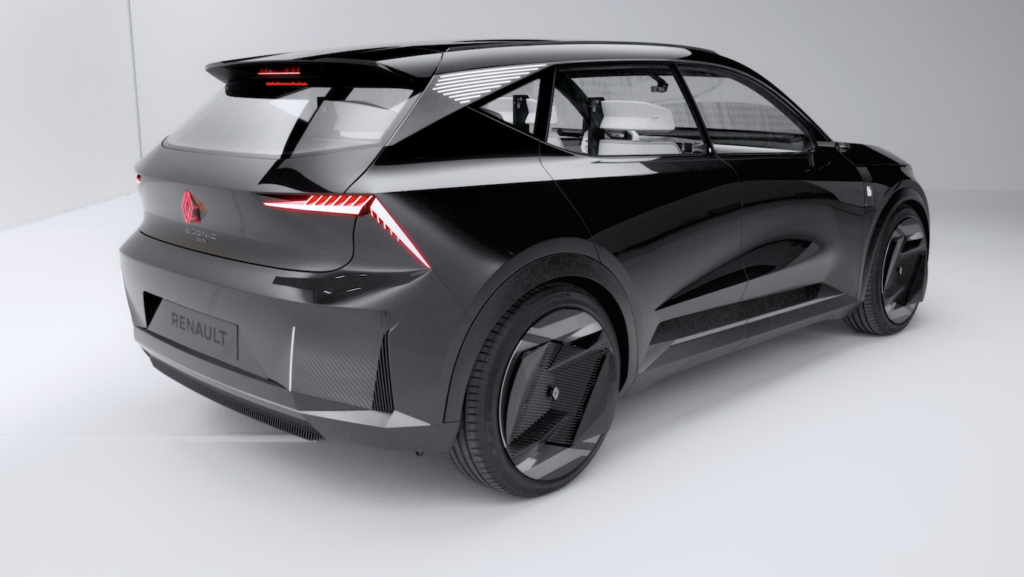
Above, from the rear, the architecture is again very classic with a generous aerodynamic spoiler at the top, a sloping window and a fairly vertical tailgate with neat volumes. The bumper on the concept is reminiscent of the graphic module of the 2020 Morphoz concept car. The design of the rear lights is reminiscent of competing models. However, the light signature is inspired by the shape of the diamond, the carmaker’s emblem.
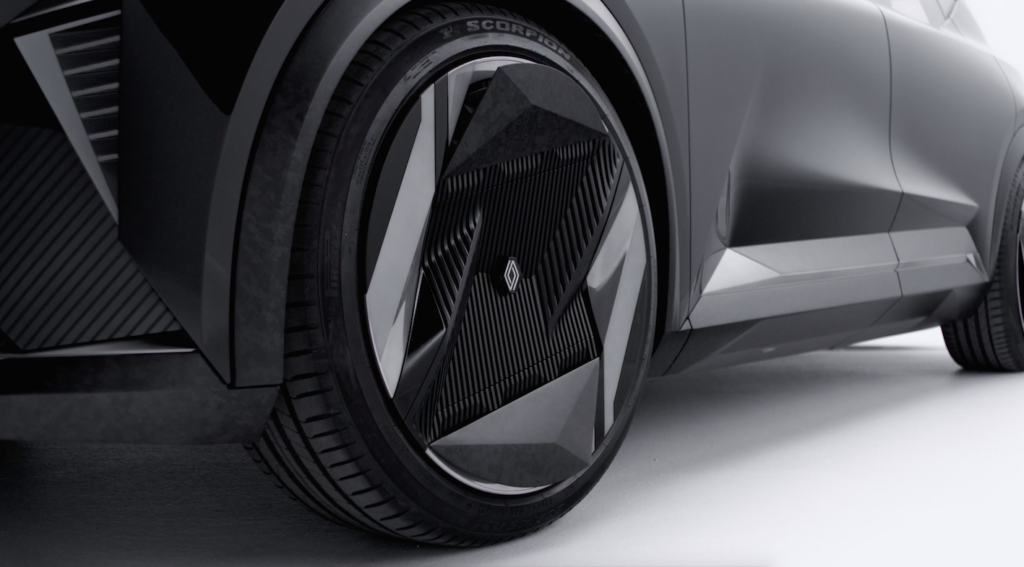
The doors and their sills (above and below) are extremely well done. The design combines sculpted volumes, without edges (the wings), and others supported by lines that fade into a volume. Complicated to implement in stamping, this theme has already been seen at Peugeot, with the E-Legend.

This close-up shows the sculpting work carried out on the sides of the concept, which will also be applied to the production vehicle. The 2024 Scenic, which is neither a unibody nor an SUV, borrows its wheel covers from the latter world. Like 70% of the car, they are made from recycled and/or recyclable materials and take into account the entire manufacturing process in order to achieve carbon neutrality.
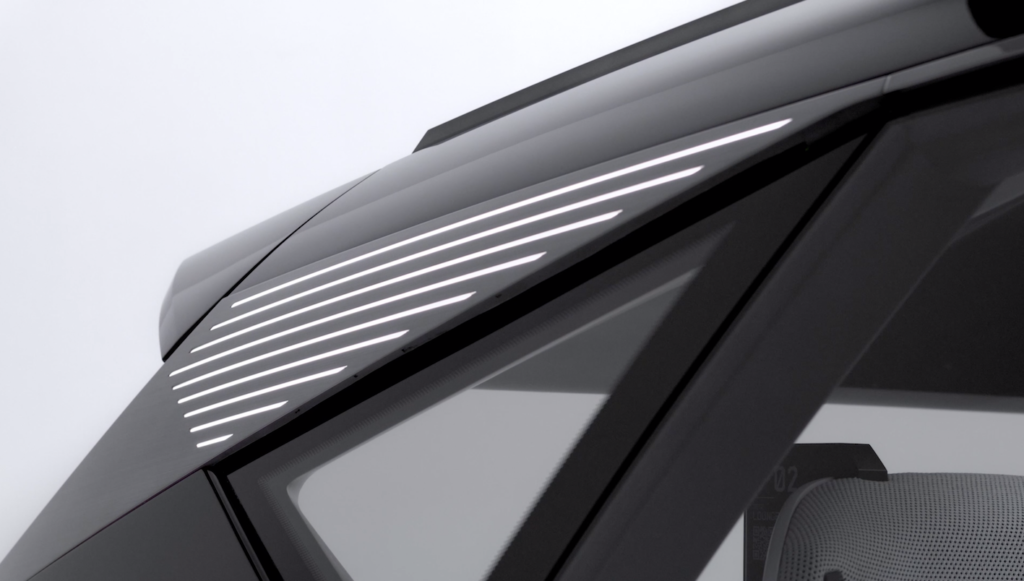
Above, the luminous stripes on the rear panel indicate the battery charge level. The triangular graphic design of the rear panel, while not original, provides simplification and a third side window of acceptable size.
DESIGN: what you need to know
1- Muscular bonnet with a rounded front end.
2- Grille extending under the headlights
3- Engine bonnet overhanging the headlamp ramp, no visible joint, better visual quality
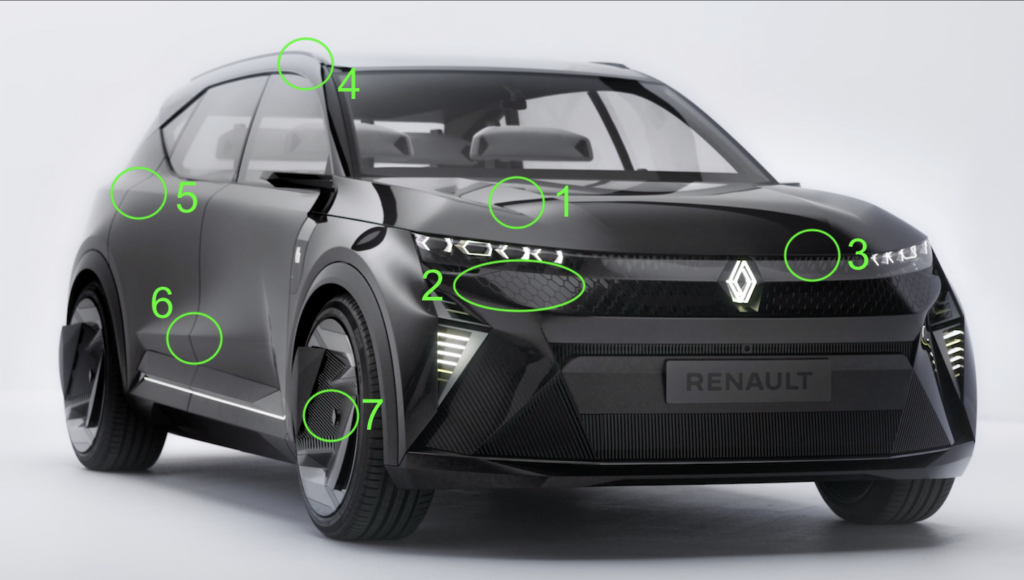
4- Discreet roof bars, reminiscent of the welding technique used on the roof of the R16 (1965)
5- Curved fenders, without edges
6- The underbody is worked with two edges
7- The Renault logo in the wheels remains vertical when driving, like on… a Rolls-Royce
WELCOME TO 2028
In the concept car, we are no longer in the Scenic of 2024, but travelling to 2028. This forward-looking interior, still designed with the red thread of the circular economy with recycled and recyclable materials, will appear in whole or in part in future models.
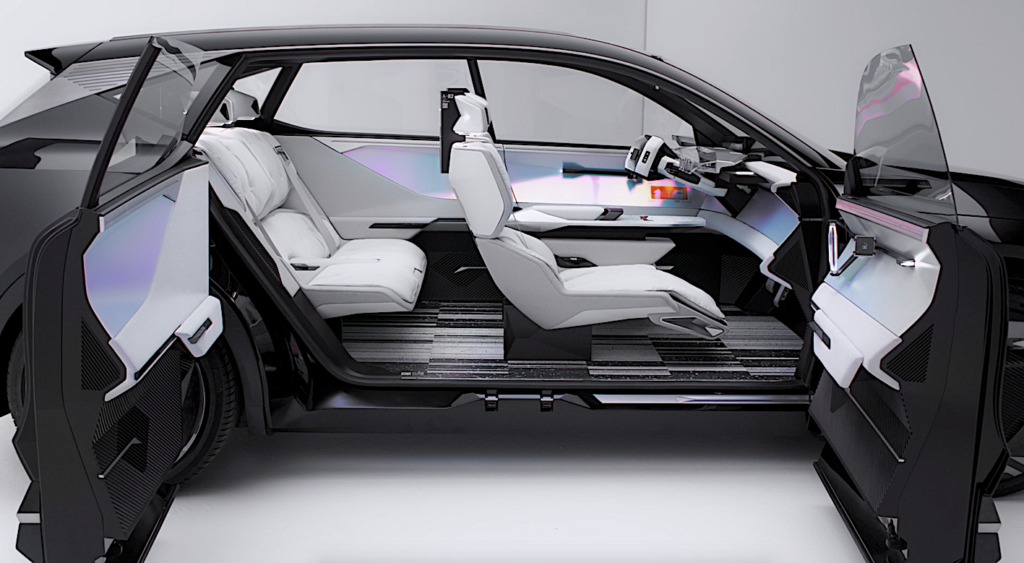
The distribution of the screens has changed significantly. The Open R is replaced by a large screen positioned at the base of the windscreen. It allows you to be in the horizon for a more pleasant view. A camera in front of the car transmits the view of what is happening in front of the car onto this large screen, increasing the driver’s field of vision.
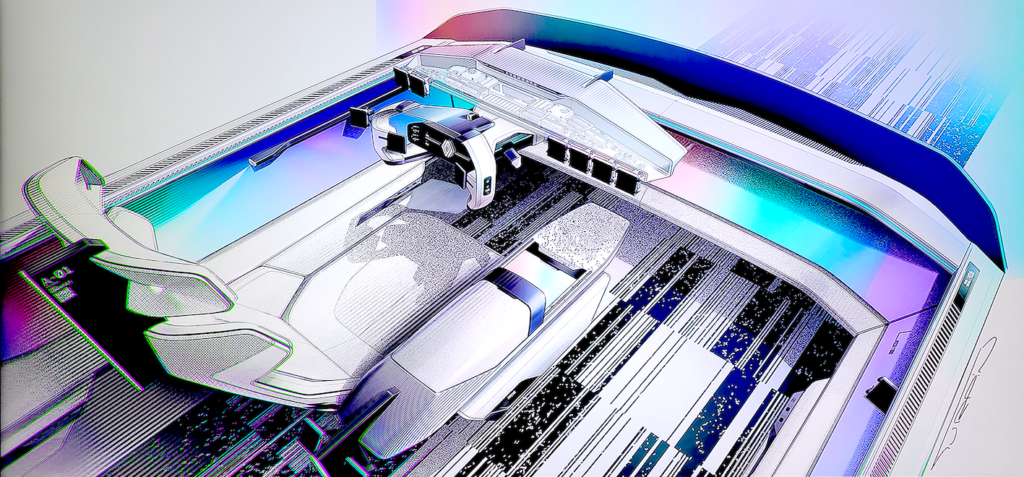
Below is the screen at the back with the two small camera screens. In front of the driver, the driver’s station houses only six small screens in the form of programmable widgets: four in the centre, which rotate depending on whether they are used by the driver or the passenger, and two to the left of the driver.
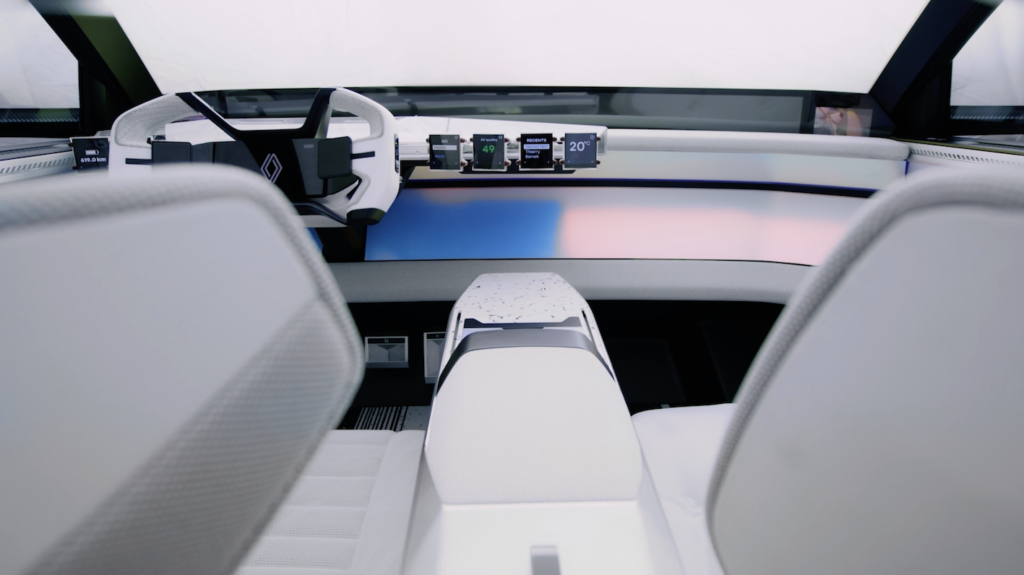
Below:
1- Large screen at the base of the windscreen.
2- Widgets for direct access to certain programmed information.
3- Central screen and camera filming the driver for video chat with rear passengers.
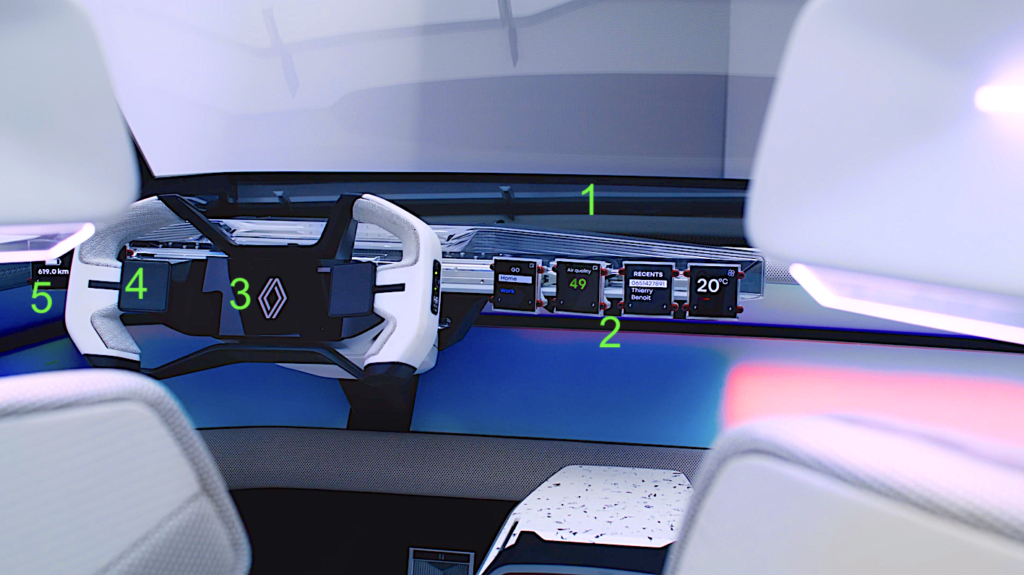
4- Two trackpads on either side of the steering wheel.
5- Two programmable widgets on the left of the steering wheel.
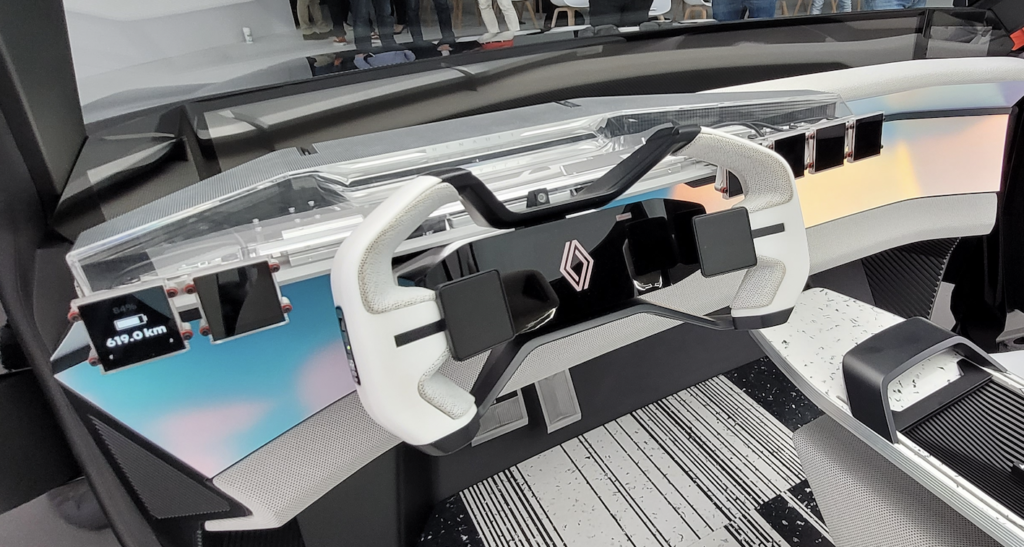
Below, seen from above, the cockpit in the shape of a “flying wing” (there is something of Northrop Grumman in this drawing by designer Vincent Turpin) is transparent and reveals the technology that allows the Widgets screen to be oriented. This transparency is a constant in the design of the Scénic Vision, because all the figures announced concerning the recycling of materials and others are verifiable and… transparent!
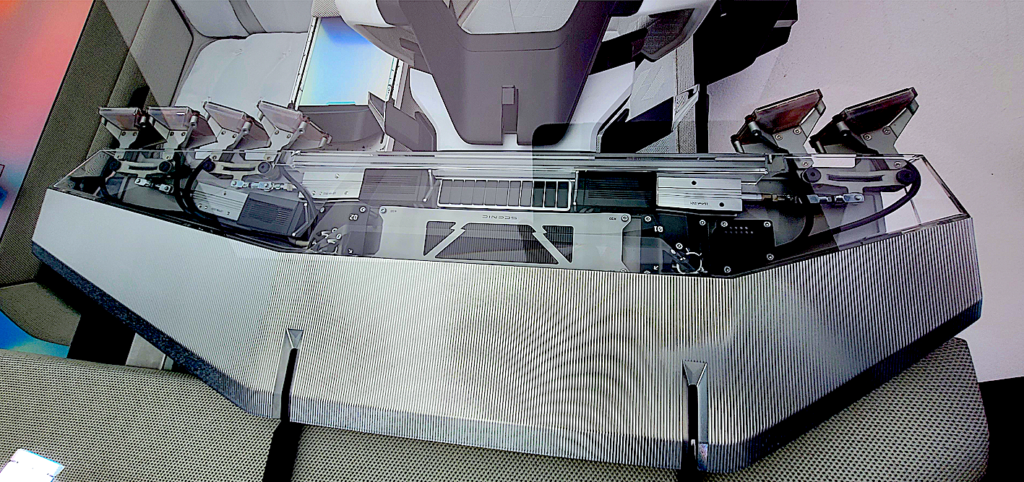
Below: the door panel is covered with a ‘dichroic’ material which, in contact with light, transmits variations in colour depending on its environment. We owe this discovery to Éléonore Lebec, who was responsible for the colour and material work on this concept, including the… transparency (here we go again!) of the handle.
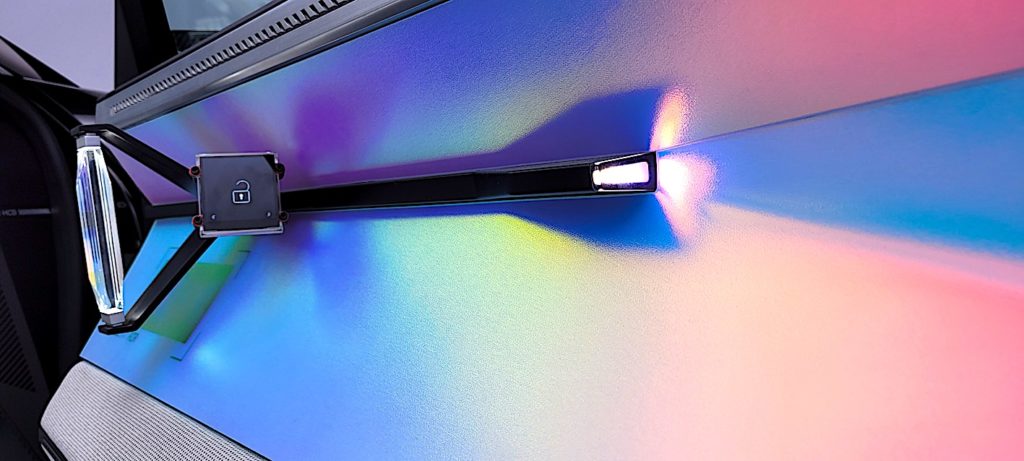
Below, on the driver’s side, the door has no handle, but behind the Widget, the transparency of the medallion reveals the cabin’s air extractor and purifier.
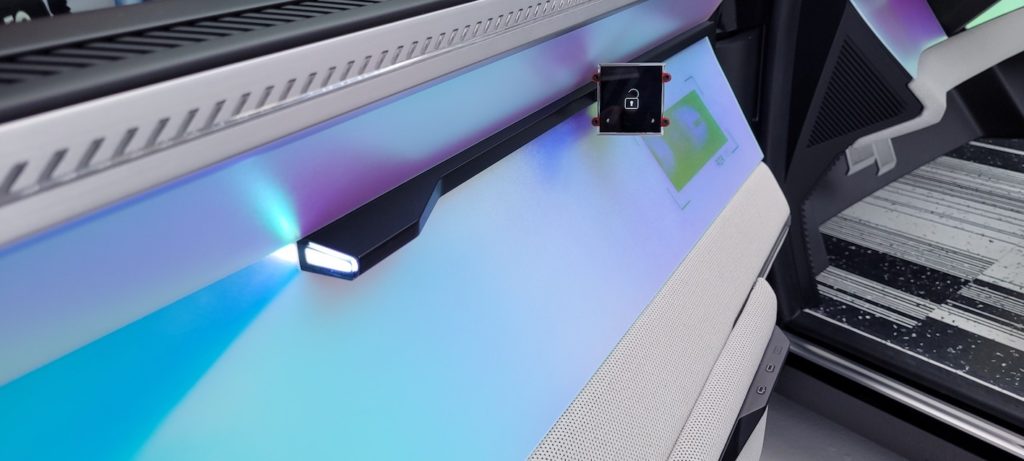
Below, since this is a new generation of Scenic, although the exterior styling is not unibody, the interior is very generous. The floor is made of recycled materials (milk bottles and pipes), while the seats are located on central pillars and not outside. It looks like the “petal” seat of the 1981 Renault 9!
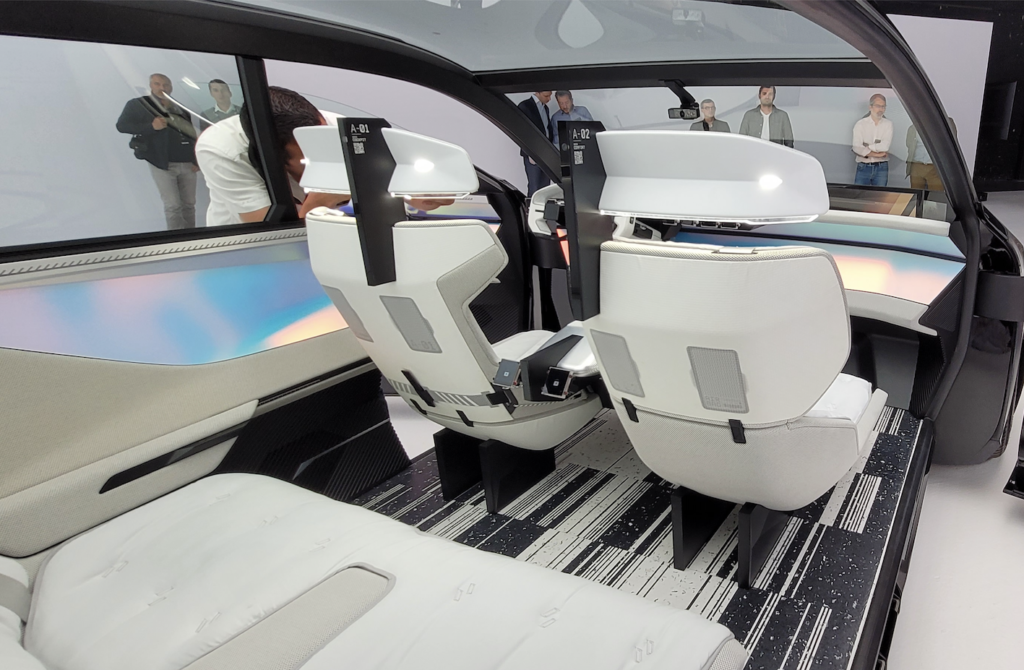
WELCOME TO 2030 AND BEYOND…
The Scénic Vision concept car reveals the style of the next Scénic in 2024 and the interior of the Renault of 2028. Its platform presents a new powertrain for the post-2030 era.
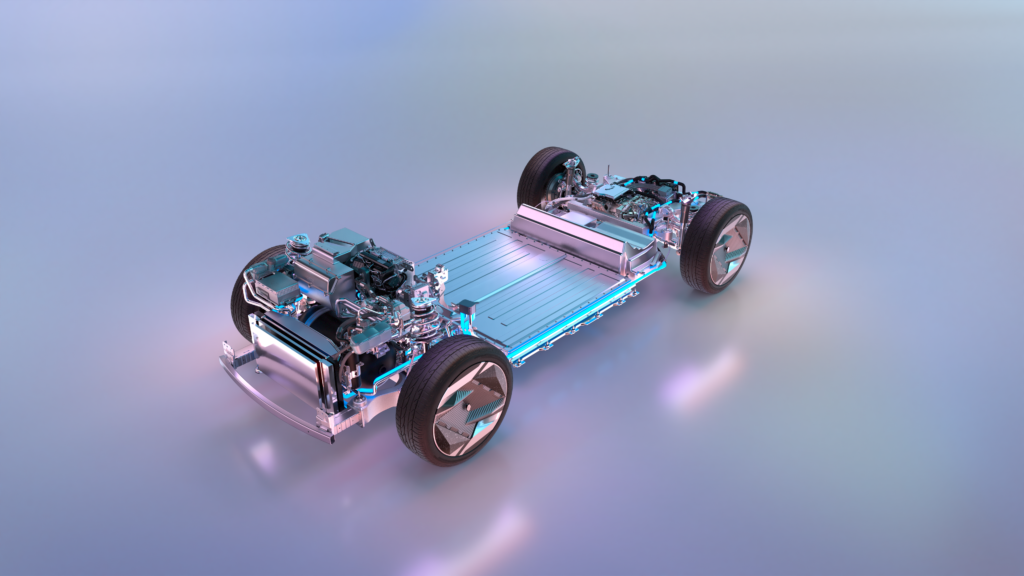
While the 2024 Scénic will be based on the platform of the 100% electric Mégane E-TECH, with its engine at the front, the Scénic Vision is different: the 160 kW electric motor borrowed from the Mégane E-TECH is, unlike the latter, housed at the rear, and is powered by 40 kWh batteries housed in the floor.
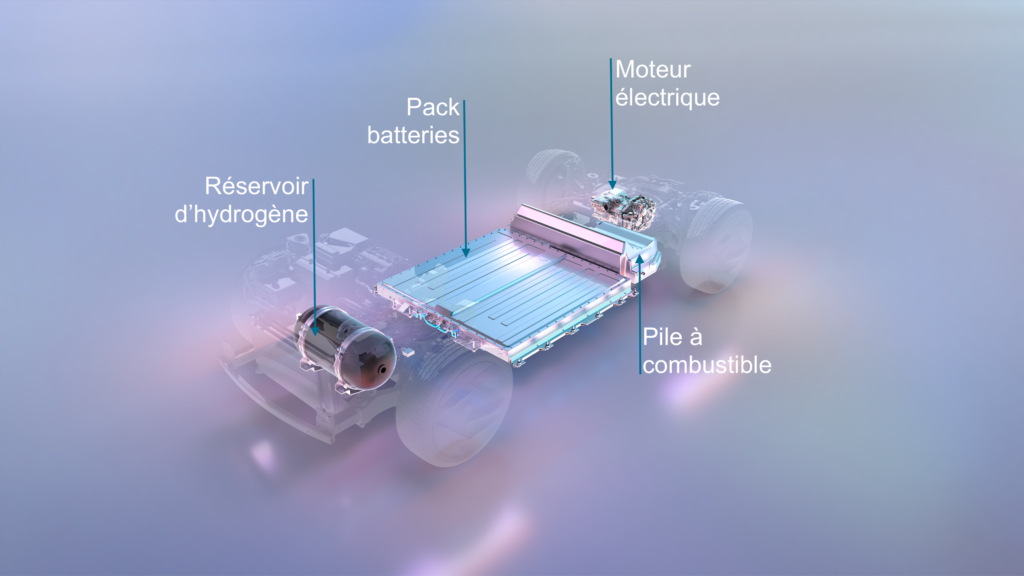
The Scénic Vision adopts a range extender via a 15 kW fuel cell powered by hydrogen. It is located at the rear, between the engine and the batteries. The hydrogen tank is located at the front of the vehicle. The Scénic Vision is a rear-wheel drive vehicle, while the 2024 electric Scénic is a front-wheel drive vehicle.
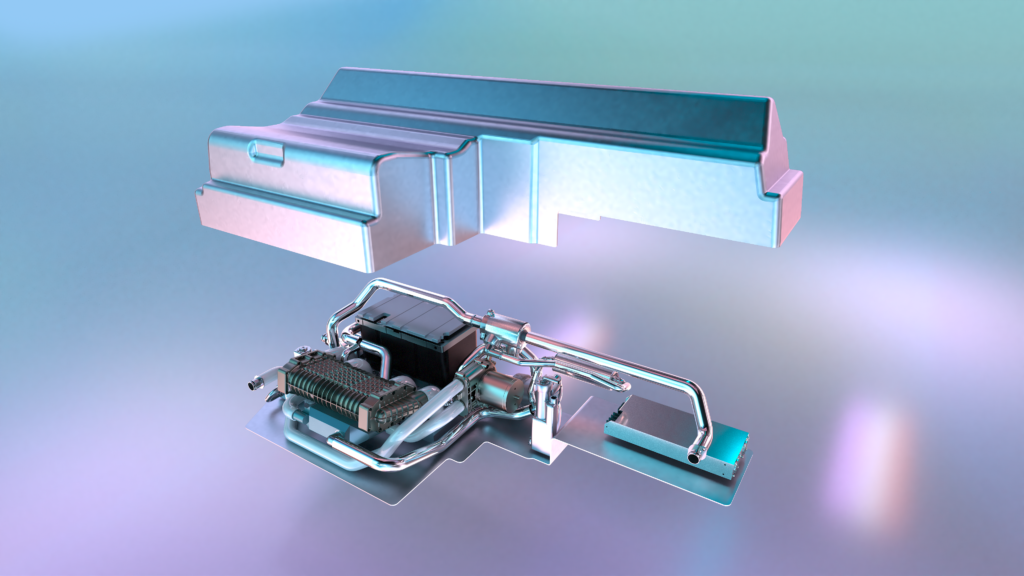
Above, the small fuel cell is housed with its accessories in front of the rear axle and behind the battery pack. It powers the batteries and extends the Scénic Vision’s range to 800 km, with just one quick stop to fill the hydrogen tank.
Concept car dimensions: length 4.49m, width 1.90m, height 1.59m, wheelbase 2.83m, weight 1700kg.

